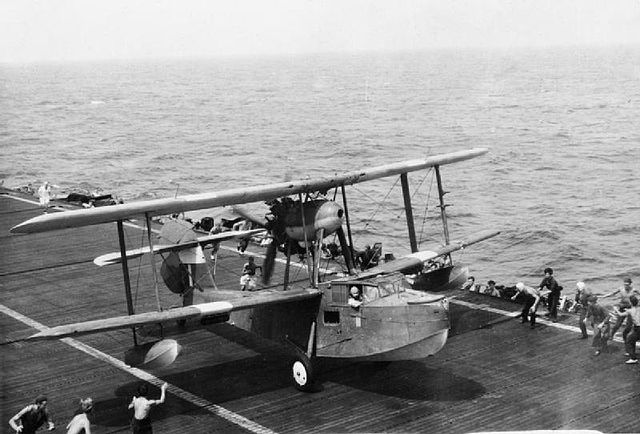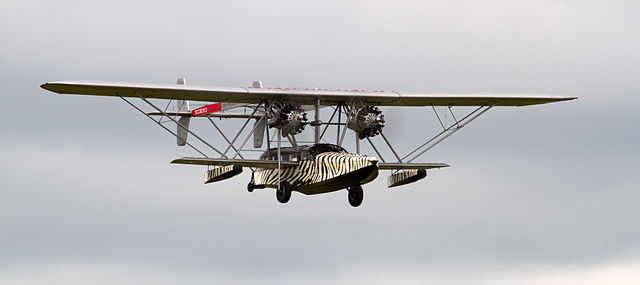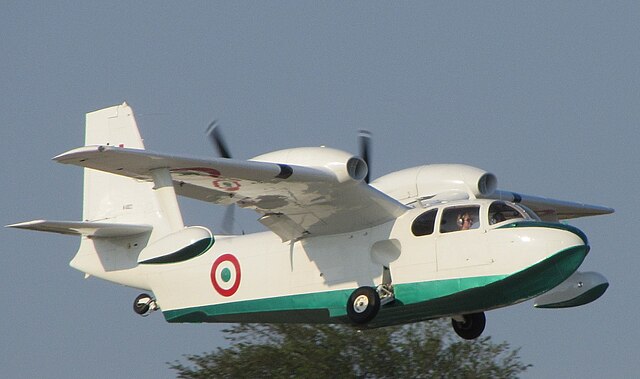The Supermarine Walrus is a British single-engine amphibious biplane designed by Supermarine's R. J. Mitchell at their works at Woolston, Southampton. Primarily used as a maritime patrol aircraft, it was the first British squadron-service aircraft to incorporate an undercarriage that was fully retractable, crew accommodation that was enclosed, and a fuselage completely made of metal.
Supermarine Walrus
A2-7 being positioned on the catapult of HMAS Hobart, a RAN Leander class cruiser, in 1939
Supermarine Walrus I, serial number K5783, from the first production batch. The aircraft served with the Royal New Zealand Navy cruisers HMNZS Achilles and HMNZS Leander.
A Walrus lands on a Royal Navy carrier in the Indian Ocean, after rescuing under fire a pilot shot down while attacking Japanese positions on the Nicobar Islands
An amphibious aircraft or amphibian is an aircraft that can take off and land on both solid ground and water. They are typically fixed-wing, though amphibious helicopters do exist as well. Fixed-wing amphibious aircraft are seaplanes which are equipped with retractable wheels, at the expense of extra weight and complexity, plus diminished range and fuel economy compared to planes designed specifically for land-only or water-only operation. Some amphibians are fitted with reinforced keels which act as skis, allowing them to land on snow or ice with their wheels up.
A Canadair CL-415 amphibian with retractable wheels
Vickers Viking - an early amphibian.
replica of Osa's Ark - a Sikorsky S-38 used to explore Africa in the 1930s.
Italian Air Force Piaggio P.136 during takeoff retracting the wheels that make it an amphibian.








